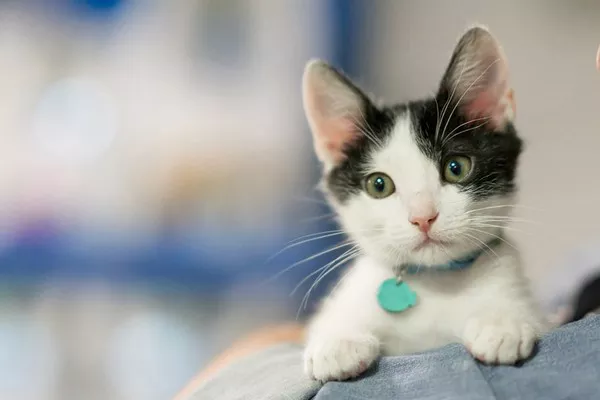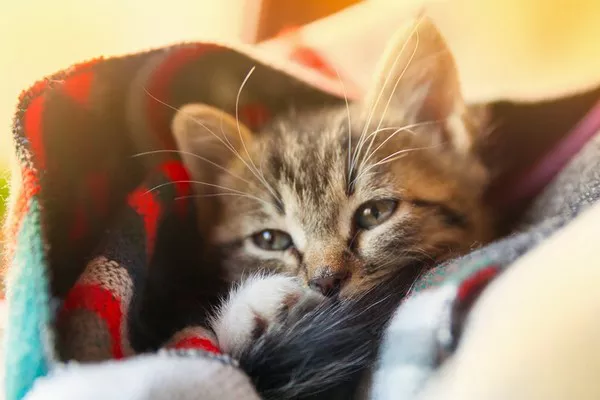Calico cats are a unique and captivating feline breed that has captured the hearts of many cat lovers around the world. With their distinctive tri-color coat and playful personalities, it’s no wonder that they are a sought-after pet. However, there are many questions and myths surrounding these cats. In this article, we will delve into eight common questions about calico cats, shedding light on their history, genetics, personalities, and much more.
1. What Makes a Cat Calico?
Calico cats are known for their striking three-color coat patterns. These patterns typically consist of white, black, and orange or ginger patches. But what exactly causes these cats to have such a unique coat? The answer lies in their genetics.
Calico cats inherit their coat patterns through their genes. Specifically, it’s the interaction of genes on the X chromosome that determines their coat colors. Female cats have two X chromosomes (XX), while males have one X and one Y chromosome (XY). The gene responsible for the black and orange coat colors, known as the Agouti gene, is located on the X chromosome. This means that in a female cat with two X chromosomes, one might carry the black coat color gene and the other the orange, leading to the distinctive calico pattern.
2. Why Are Most Calico Cats Female?
One of the intriguing characteristics of calico cats is that the majority of them are female. In fact, it’s exceedingly rare to find a male calico cat. But why are most calico cats female?
The answer to this question lies in the genetics behind calico coat patterns. As mentioned earlier, the calico pattern is determined by the interaction of genes on the X chromosome. Female cats have two X chromosomes, which can carry different color genes. This means they have the potential to express both black and orange coat colors, resulting in the classic calico pattern.
In contrast, male cats have only one X chromosome and one Y chromosome. They can only inherit one color gene, either black or orange, but not both. When a male cat inherits two X chromosomes (XXY), it usually has a genetic anomaly, such as Klinefelter syndrome, which can lead to male calico cats. However, these cases are extremely rare.
3. Are All Calico Cats the Same?
Calico cats are known for their three-color coat pattern, but not all calico cats look the same. The distribution of black, white, and orange patches on their fur can vary greatly from one cat to another. Why is my Calico cat so mean and why do some calico cats have a more prominent black or orange coloration while others may have larger white patches?
The answer lies in the individual genetic makeup of each cat. Just as in any other breed, calico cats can have variations in their coat patterns due to genetic factors. The specific combination of color genes carried by each cat will influence the extent of black, white, and orange on their coat. Some calico cats may have a more balanced distribution of colors, while others may exhibit a dominance of one color over the others.
4. Do Calico Cats Have Distinct Personalities?
While calico cats are known for their stunning appearance, many cat owners wonder if they also have distinct personalities. Why is my Calico cat so mean or, on the contrary, why is my calico cat so sweet?
It’s a common belief that a cat’s coat color can be a predictor of their behavior, but is there any truth to this notion?
Calico cats, like any other cat breed, have individual personalities. Their behavior is not solely determined by their coat color. While some calico cats may be more independent or feisty, others can be affectionate and friendly. It’s important to remember that a cat’s personality is shaped by a combination of genetics, early experiences, and how they are raised and socialized. Just like humans, cats have unique temperaments, and no two cats are exactly alike.
5. Are Calico Cats Prone to Health Issues?
Another common question that arises when it comes to calico cats is whether they are prone to specific health issues. People often wonder if there are any genetic predispositions or health concerns associated with this particular coat pattern. Why is my Calico cat so mean when it comes to vet visits?
Calico cats, in and of themselves, are not inherently more susceptible to health problems due to their coat color. However, it’s important to note that some of the genes responsible for coat color can also be linked to other genetic factors that may influence a cat’s health. For instance, the gene responsible for the orange coloration is associated with the likelihood of developing skin cancer in areas with little to no pigmentation. This means that calico cats with large areas of white on their coat may be more prone to sun-related health issues.
To ensure the well-being of your calico cat, it’s essential to provide them with proper sun protection and regular veterinary care, just like any other cat.
6. Can Calico Cats Be Mixed Breeds?
Many people are curious about the breed of calico cats and whether they can be purebred or mixed breeds. Why is my Calico cat so mean when it comes to identifying their lineage? The truth is, calico is not a specific breed but rather a coat pattern that can be found in various cat breeds.
Calico cats can be found in different breeds, including domestic shorthairs, Maine Coons, and American Shorthairs, among others. The presence of the calico pattern in a cat does not determine their breed.
A calico cat can be a purebred or a mixed breed, depending on their lineage and ancestry.
If you’re curious about the specific breed of your calico cat, a DNA test or consultation with a veterinarian can provide more insights into their genetic heritage.
7. How Long Do Calico Cats Live?
The lifespan of a calico cat is a subject of interest for many cat owners. Why is my Calico cat so mean when it comes to discussing their longevity? Like all cats, the life expectancy of a calico cat can vary depending on several factors, including their overall health, diet, and living conditions.
On average, a healthy calico cat can live anywhere from 15 to 20 years or more. With proper care and regular veterinary check-ups, they can enjoy a long and fulfilling life. However, it’s essential to be mindful of potential health concerns associated with the calico pattern, such as sun-related issues, as mentioned earlier. Providing your calico cat with a safe and comfortable environment, a balanced diet, and plenty of love and attention can help ensure a long and happy life.
8. Can You Predict a Calico Kitten’s Coat Pattern?
One common question that arises among prospective cat owners is whether it’s possible to predict the coat pattern of a calico kitten.
People often wonder if a calico cat’s kittens will also have the distinctive three-color coat. Why is my Calico cat so mean when it comes to passing on their genes?
The coat pattern of calico kittens can be somewhat predicted based on the genetics of the parents. Since the calico pattern is influenced by the X chromosome, it’s essential to consider the color genes carried by both the mother and the father. If both parents carry the genes for black and orange coat colors, there is a higher likelihood that their kittens will also have a calico pattern. However, the exact distribution of colors on the kittens’ coats may vary and is influenced by chance.
In conclusion, calico cats are a fascinating and beloved part of the feline world. Their unique coat patterns, genetics, personalities, and potential health considerations make them a subject of curiosity for many cat lovers. While there are common questions and myths surrounding calico cats, understanding the science behind their coat patterns, their individual personalities, and the importance of proper care can help you provide the best possible life for your calico companion. So, the next time you wonder, “Why is my Calico cat so mean?” or any other question about these tri-color felines, you’ll be better equipped with the knowledge to answer it.
Related Topics:
Why Are Male Calico Cats So Rare?
Calico Cats: Color Variations, Genetics, & Interesting Facts
How do Calico cats reproduce?


























